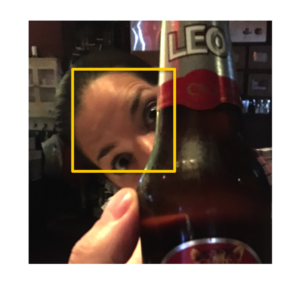When most of us upload our selfies and photo bombs to the web, and some do it more than is healthy and way more than is desired — also, please stop — we have no idea how much is going on. You might think it’s just you photo-bombing a beer bottle, but what exactly happens after that depends on who you ask. One thing is for sure: it’s more technical than most of us will grasp or ever want to. Another thing is for sure: the answer could mean millions or even billions of dollars. Is your goofball face being “scanned”? Are the pixels being examined or is some technological magic wand measuring the distance between your eyeballs? And what’s being done with that information? Do you know? Do you care?
In his blog, “engineer turned attorney” Brian Higgins dives into the questions as being posed in the Facebook facial recognition case pending before U.S. Judge James Donato in San Francisco. Higgins says that next month a jury will have to decide whether Facebook’s A.I. technology creates “biometric information” which is regulated under the Illinois Biometric Information Privacy Act, or BIPA.
“In some respects,” Higgins writes, “the jury’s decision could reflect general sentiment toward AI during a time when vocal opponents of AI have been widely covered in the media. The outcome could also affect how US companies, already impacted by Europe’s General Data Protection Regulation (GDPR), view their use of AI technologies to collect and process user-supplied data. For lawyers, the case could highlight effective litigation tactics in highly complex AI cases where black box algorithms are often unexplainable and lack transparency, even to their own developers.”
You can read Higgins’ complete post in the Artificial Intelligence Technology and the Law blog at AITechnologyLaw.com. Brian Wm. Higgins is a partner in the Washington, DC, intellectual property practice of Blank Rome LLP.
-wth

